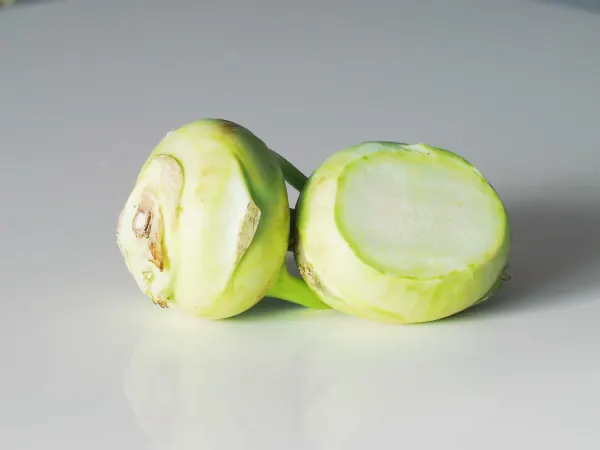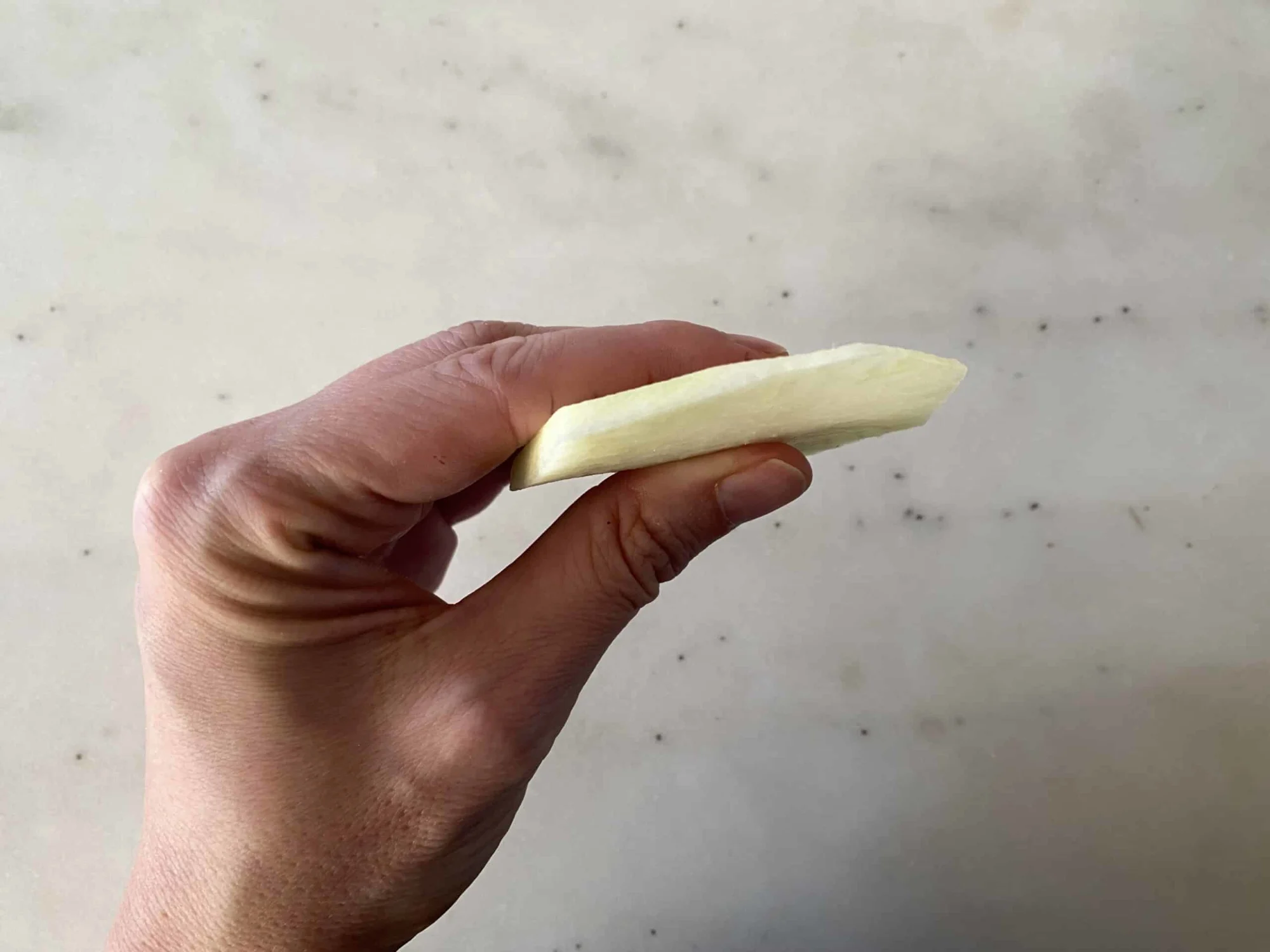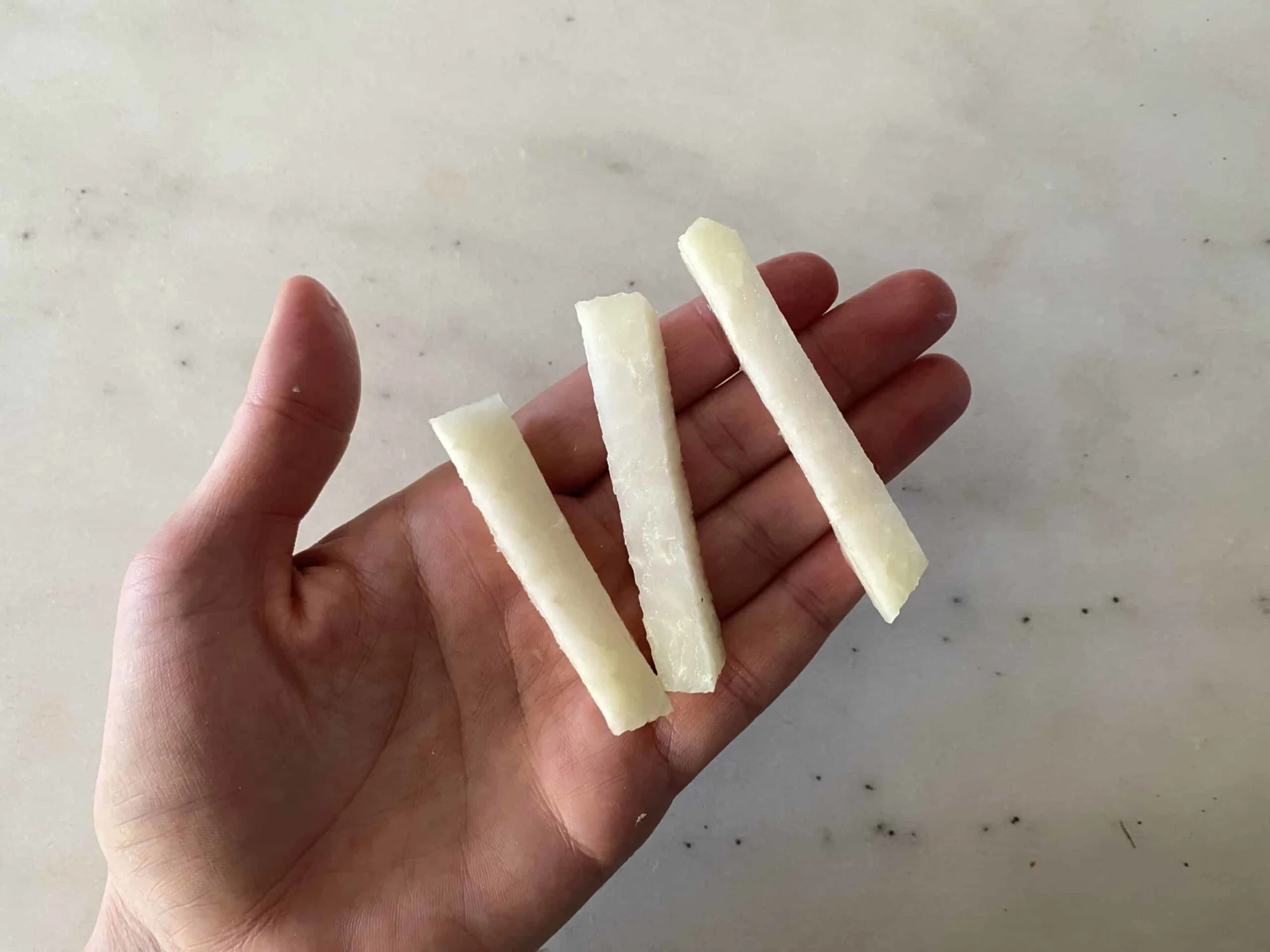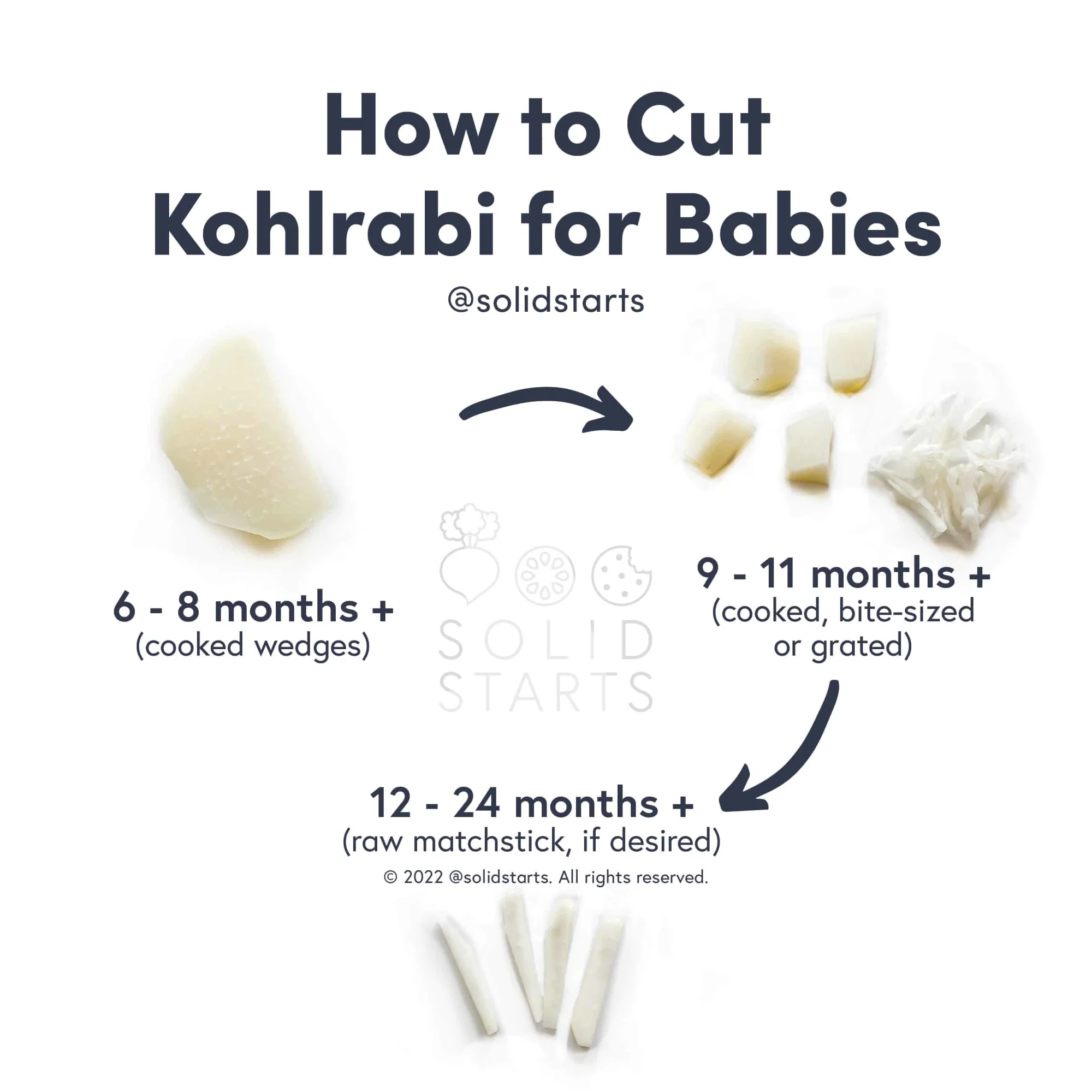Access our First Foods® Database in the Solid Starts App.
Learn moreKohlrabi
Vegetable
Age Suggestion
6 months
Iron-Rich
No
Common Allergen
No

When can babies eat kohlrabi?
Kohlrabi, when cooked until soft, may be introduced as soon as baby is ready to start solids, which is generally around 6 months of age.
How do you prepare kohlrabi for babies with baby-led weaning?
Every baby develops on their own timeline, and the suggestions on how to cut or prepare particular foods are generalizations for a broad audience.
6 to 8 months old:
Offer wedges of cooked kohlrabi that baby can grab and munch on. Kohlrabi skin is edible, but the skin of larger, mature kohlrabi may be tough to chew, even when cooked, so feel free to remove it before serving. Alternatively, serve mashed kohlrabi that baby can try to scoop up. Mashed kohlrabi also works well as a binder for iron-rich grains, legumes, and seeds, like amaranth, lentils, and quinoa. Kohlrabi leaves are edible, too. If you’d like to serve them, finely chop the cooked greens and stir them into the mashed root or another soft, scoopable food like yogurt.
9 to 12 months old:
At this age, babies develop the pincer grasp (where the thumb and forefinger meet), which enables them to pick up smaller pieces of food. When you see signs of this development, try moving down in size by offering cooked kohlrabi that has been cut into bite-sized pieces or finely grated, raw kohlrabi. Try not to fret when you see baby trying to shovel food into their mouth: it is normal at this age and a good learning experience for the child as they understand the boundaries of their mouth. If you prefer, you can continue to mash cooked kohlrabi.
12 to 24 months old:
Once a toddler has developed the ability to bite and tear with their teeth, raw kohlrabi root can be grated or cut into paper-thin slices, which you can serve on their own, dressed with a simple sauce, or mixed with other foods. You can also use kohlrabi (mashed or grated) in bean patties, dumplings, fritters, meatballs, and pancakes.


For tips on raising a healthy, plant-based eater, see our Best & Worst Plant-Based Foods for Babies.
Videos
Is kohlrabi a common choking hazard for babies?
Yes. For children under the age of five, raw, firm vegetables and fruits are high on the list of choking hazards, as they can be tough to chew. To minimize the risk, cook kohlrabi until it’s completely soft. For more information on choking, visit our sections on gagging and choking and familiarize yourself with the list of common choking hazards.
Is kohlrabi a common allergen?
No. Allergies to kohlrabi are uncommon. Information on allergies to kohlrabi is limited, though kohlrabi is part of the cruciferous family of vegetables, and individuals who are allergic or sensitive to other plants in this family, such as mustard greens and broccoli, could theoretically be sensitive to kohlrabi.
Individuals with Oral Allergy Syndrome (also known as pollen food allergy syndrome), and particularly those with sensitivities to mugwort pollen, may also be sensitive to cruciferous vegetables like kohlrabi. Oral Allergy Syndrome typically results in short-lived itching, tingling, or burning in the mouth and is unlikely to result in a dangerous reaction. Cooking kohlrabi can help minimize the reaction.
As you would when introducing any new food, start by offering a small quantity for the first few servings. If there is no adverse reaction, gradually increase the quantity over future meals.
Is kohlrabi healthy for babies?
Yes. Kohlrabi is a great source of vitamin C—a potent antioxidant that also helps build the immune system and supports the absorption of iron from plant-based foods. Kohlrabi offers vitamin B6 (which powers muscle function, brain health, and hormone production) and potassium (to assist fluid balance and heart health). It is also an excellent source of fiber to support baby’s developing digestive system. As with most vegetables, kohlrabi contains small amounts of many other vitamins and minerals, as well as carbohydrates, fiber, and protein. Different varieties of kohlrabi, with skin ranging from green to purple, offer different concentrations of beneficial plant compounds, including carotenoids, phenols, flavonoids, and glucosinolates.
★Tip: Thanks to the vitamin C in kohlrabi, this veggie is ideal for aiding the absorption of iron from foods such as beans, peas, lentils, tofu, nuts, seeds, and leafy greens.
Can kohlrabi help baby poop?
Yes. Kohlrabi offers good amounts of fiber, particularly insoluble fibers (which help bulk up bowel movements), as well as glucosinolates and phenols. Together, these components contribute to overall digestive health and bowel regularity. Note that pooping patterns can vary significantly from child to child. Be sure to talk to your pediatric healthcare provider if you have concerns about baby’s pooping and digestive function.
Where does kohlrabi come from?
Kohlrabi may resemble a root, but this vegetable is actually a bulbous stem with edible leaves that grows above ground. Its exact origin remains a mystery, though historical records suggest humans have been growing and eating the vegetable for centuries. Kohlrabi is part of the brassica family—a diverse group of plants, including cauliflower, collard greens, kale, rutabaga (swede), and others, descended from wild ancestors native to lands around the Mediterranean Sea. Kohlrabi is a loanword from German that translates to “cabbage turnip,” although it tastes only faintly of these vegetables. Young kohlrabi has a crisp bite like apple, the herbaceous taste of broccoli, and a juicy texture that diminishes as the plant matures, becoming woodier with more pronounced flavor.
What are recipe ideas for cooking kohlrabi?
Young kohlrabi taste delicious in fresh salads and slaws along with ingredients like carrot, garlic, ginger, and radish. More mature kohlrabi works well when cooked—try it in vegetarian curries and hearty stews. Like bell pepper and tomato, kohlrabi can be cooked, hollowed out, and stuffed with rice or ground meat, as in the Romanian dish gulii umplute. You can also use kohlrabi to make pickles or fermented foods like kimchi or sauerkraut. Don’t toss the greens—they taste delicious braised with bacon or sauteed in oil and topped with an egg. Want to keep it simple for baby? Kohlrabi works well as a substitute in most recipes that call for potato. For babies who love potatoes, swap in kohlrabi and use it as a vehicle to introduce common allergens like tree nuts, which bring out its earthy sweetness.
Written and reviewed by these specialists
J. Truppi, MSN, CNS
V. Kalami, MNSP, RD, CSP
K. Grenawitzke, OTD, OTR/L, SCFES, IBCLC, CNT
S. Bajowala, MD, FAAAAI. Board-Certified Allergist & Immunologist (allergy section)
R. Ruiz, MD, FAAP. Board-Certified General Pediatrician & Pediatric Gastroenterologist
Expert Tips Delivered to Your Inbox
Sign up for weekly tips, recipes and more!
Copyright © 2025 • Solid Starts Inc


